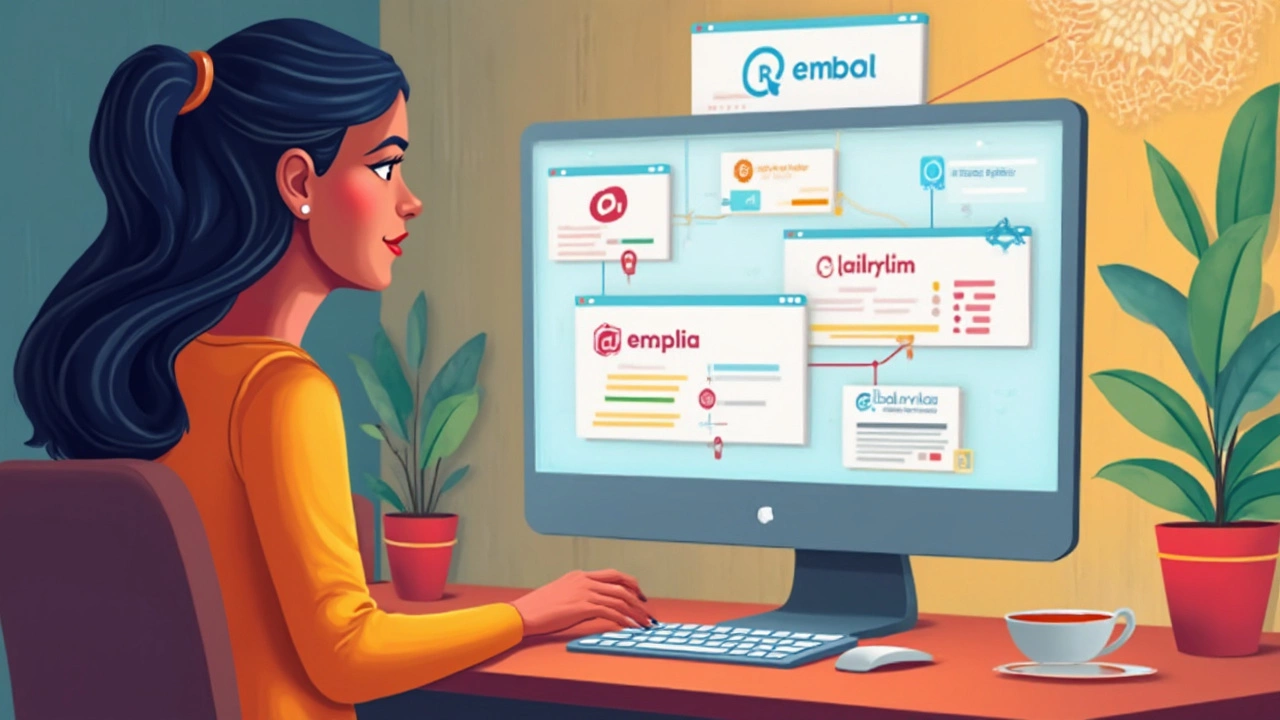If you’ve ever wondered which sites actually count as eLearning platforms, you’re not alone. With everyone in my Chennai apartment block talking about online courses (even my 60-year-old uncle is showing off his Google certificates now), it’s obvious that digital learning has invaded daily life. Somewhere between Zoom yoga and late-night Duolingo streaks, eLearning platforms turned from niche techy things into everyday tools. But what actually makes a website an eLearning platform? Is YouTube one? Is WhatsApp group study? Let’s get clear on what separates a true eLearning space from just another corner on the web.
Understanding What Makes an eLearning Platform
Picture this: you want to learn coding in your pyjamas at midnight. Where do you go? Schools and colleges don’t operate all night, but eLearning platforms do. At its core, an eLearning platform is an online space built with the goal of delivering structured learning. Not just random videos or PDFs thrown in a folder—think recorded lessons, quizzes, progress tracking, and maybe that annoying animated mascot reminding you to finish your calculus module.
The magic ingredient is interactivity and structure. Platforms like Coursera, Udemy, and Skillshare give you a path: you sign up, pick a course, watch lessons, do exercises, get feedback or certificates. Even Khan Academy has dashboards, points, and tests. These platforms are designed for learning, not just for sharing information. YouTube, in comparison, has great tutorials but no tracking, assignments, or progression—it’s a resource, not a course environment.
A good eLearning platform usually brings together some or all of these features:
- Enrollment and user accounts letting you track progress
- Organized courses split into digestible lessons and modules
- Interactive elements like quizzes, simulations, discussion boards
- Feedback, grades, or certification
- Support for teachers to create, upload, and manage content
- Mobile and desktop compatibility
- Sometimes live classes or forums
All of these turn a website into a learning tool and guide you step by step. That's what makes Google Classroom an eLearning platform, and WhatsApp just a messaging app.
Popular eLearning Platforms and What Sets Them Apart
It’s easy to get lost in the names—EdX, Unacademy, Byju’s, Udacity—the list goes on and on. So, what are the heavy hitters around the world, and what makes them different?
eLearning platforms come in all flavors. Udemy is like the giant supermarket of online learning, with everything from Python programming to photography. Anyone can create a course here (which means quality varies widely), but the range is unbeatable. Courses are usually one-time purchases, with lifetime access, so you can study at your pace and come back for revision before interviews and exams. Coursera, on the other hand, teams up with universities and big companies to offer structured courses, professional certificates, and even full-online degrees. Their system is more like a real college class, scheduled, graded, sometimes with peer assignments and deadlines.
Khan Academy, legendary for its free math and science lessons, is big with school students. The platform is slick, simple, and gamified, making it less boring (seriously, their points and badges somehow work on grown-ups too). In India, Byju’s and Unacademy are huge for exam prep—think JEE, NEET, UPSC—and combine slick animations with doubt clearance and live mentoring via chat.
Then there’s LinkedIn Learning, which neatly ties your learning to your CV (watch a video, get a badge, show it off on your profile). Sites like Skillshare make learning social, focusing on creativity and projects, not just tests and certificates. Google Classroom is a bit more hidden—mostly used by teachers to assign work during lockdowns, but still an eLearning platform by the classic definition.
What sets these apart is how they approach content creation (open or controlled), their subject focus, their audience (kids, professionals, hobbyists), and whether they stick to videos or go hands-on with projects, quizzes, or live sessions. Some focus on affordability, others on university partnerships or high-tech features like AI tutors.

The Perks and Pitfalls of Using eLearning Platforms
Nothing is perfect, and that holds true for eLearning as well. Let’s start with the good stuff. The single biggest advantage? Convenience. People in Chennai now crack civil service exams from rural villages, working folks learn new coding languages after dinner, and mothers upskill during their kids’ naptimes. Flexibility is king. All you need is an internet connection and a device—even entry-level smartphones are enough for most major platforms.
eLearning also opens up a buffet of options. Want to study classical guitar from a Parisian tutor or machine learning from Stanford professors? It’s possible without ever leaving your room. And don’t forget cost: while some premium courses run into thousands of rupees, there are enough free or low-cost options that price shouldn’t be a barrier to start. This democratization is massive. For comparison, MIT OpenCourseWare puts up lecture notes and problem sets for free, matching the content full-timers pay lakh after lakh to access.
But let’s not paint an unrealistically rosy picture. Online learning has its headaches, too. Self-discipline isn’t easy (raise your hand if you’ve signed up for a five-course bundle on coding, finished exactly one, and now can’t remember your login). Distractions are everywhere: phone pings, Netflix tabs, delivery guys. There’s also the lack of human touch—no eye contact with teachers, no canteen gossip, no immediate help if you’re stuck. Some platforms try to fix this with lively discussion boards or live classes, but it’s never quite the same as the chaotic energy of a normal classroom.
Then there’s tech trouble. If you have patchy internet (ask anyone trying to watch a live class during Chennai’s annual monsoons!), you’re likely to rage-quit. Moreover, there’s a sea of low-quality content out there. Not every ‘expert’ on Udemy is really an expert. So, you need to double-check course reviews, preview videos, or find third-party recommendations. Finally, certificates from some platforms don’t count for much with certain employers—though this is slowly changing as online learning becomes the new normal.
Tips to Choose and Get the Most Out of an eLearning Platform
So you’re scrolling through platforms, ready to sign up. How do you pick the right one, avoid wasting money, and actually finish what you started?
First, be crystal clear on what you want. If you’re prepping for exams like JEE or NEET, look for platforms focused on Indian syllabuses, proven results, and responsive doubt-solving (Unacademy, Byju’s, Toppr are solid options). For professional skills—coding, design, data science—look at Coursera (for certificates), Udemy (for breadth), or LinkedIn Learning (for work skills). If you’re on a budget, Khan Academy or YouTube for the basics are hard to beat, but add a proper platform if you want structure and accountability.
Always check how interactive the course is. Videos are fine, but without quizzes, projects, or practice exercises, the content goes in one ear and out the other. Platforms with learning streaks, reminders, and points (like Duolingo or Khan Academy) are oddly addictive and can keep you honest. Read reviews—not just testimonials on the platform, but third-party YouTube or Reddit threads where people actually share the down-and-dirty details.
Sign up for a free trial or audit the course if possible before committing. Many platforms let you preview a few lessons or modules. That five-minute sample can reveal if the teaching style works for you. And don’t buy giant bundles unless you’re sure you’ll use them—start with one or two small courses first. Trust me, half my Chennai friends have abandoned pileups of half-used courses during sales seasons.
If you get stuck, join discussion boards, subreddits, or Telegram groups related to your subject. Nothing boosts learning like a bit of shared misery and tips from people who started before you. And, finally, set a realistic schedule. Even 15-20 minutes a day is enough to make progress—and much less intimidating than marathon study sessions.
Bottom line: true eLearning platforms are defined by structure, interactive lessons, and tools that help you track progress. They aren’t just video libraries or social sharing sites. Picking the right platform requires a mix of research, trial, and self-awareness—and maybe a little help from those who’ve been through it already. So whether you’re upskilling for your job, cramming for an exam, or picking up a new hobby, take the leap. The world’s classroom is open—all you have to do is log in.



